Adverbs vs Adjectives Example: 3 Ways to Teaching Grammar in Context.
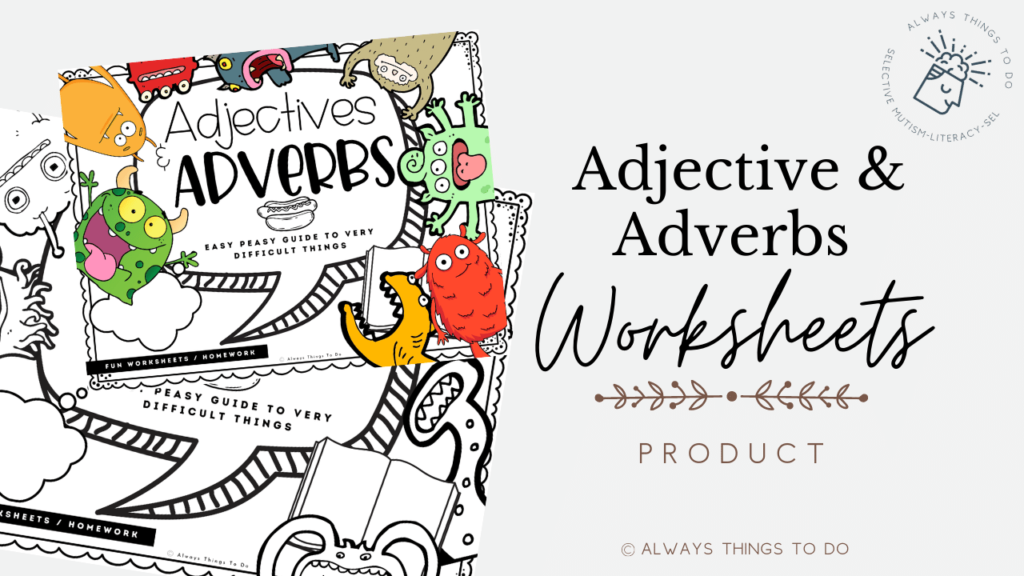
Teaching grammar in an elementary classroom is an important component of literacy education. Kids are known for hating grammar or ignoring it altogether, especially when explicitly taught. While kids may intuitively know when to use adverbs vs adjectives, the goal of literacy education to bring this implicit knowledge to the level of metacognition so that kids can learn to play with the language on a more creative level.
The problems of many teaching resources I encountered are not often evident, but the way grammar is treated is either not student appropriate, or exercises on a specific language phenomenon are given in isolation.
Take teaching adverbs vs adjectives example. When adjectives are introduced, the focus is placed on canonical examples: “The rock is shiny, rough, flat” or “She is happy, exhausted, frustrated.” Meanwhile, adjectives are used in many other positions in a sentence:
- After the verb “to be” to describe a subject that is not always a noun: Going to school is fun.
- Before a noun in an object position I see a beautiful leaf.
- After verbs like “feel, look, seem”: You seem upset. You look tired.
As for adverbs, their use is represented as modifying a verb and describing a manner of an action: The car drives slowly. He sings beautifully.
At the same time, adverbs are extremely tricky. They do not have to have a -ly ending (e.g., fast, hard, etc.). They can modify adjectives (e.g., oddly beautiful). They can denote time (e.g., today, tomorrow, etc.) or indicate frequency (e.g., rarely, regularly).
Because ELA classes are packed with the information to learn, grammar skills are presented as 10-minute lessons within the limited number of exercises that often lack kids-appropriate explanation, context, and sufficient practice.
My experience with studying language as a phenomenon and teaching grammar to ELLs has taught me one important thing: the best way to teach grammar is not to teach it traditional way (presenting the explicit rule followed by a drill).
And while there can be many ways to approach teaching “adverbs vs adjectives”, I will present you here 3 essential principles that will make grammar teaching more efficient.
Make sure to provide robust and continuous input (context) while teaching adverbs vs adjectives.
Input is the king. In other words, one cannot learn grammar based on some abstract rules and limited drills.
Presenting examples of adverbs and adjectives in a context will allow students observe regularities of use for these parts of speech. One mini-lesson on adverbs vs adjectives, for example, will not be sufficient. But if attention is drawn to examples of adverbs and adjectives across contexts and subjects, the learning of grammar will be more organic and meaningful.
In addition, give students examples that model all kinds of adjective and all kinds of adverbs. Very often the examples in books are limited to specific uses.
For example, most often adjectives are demonstrated in sentence like – It is a beautiful garden – It is smooth – where adjectives describe an object or are part of “It is…” construction. Adverbs are most often exemplified through the description of verbs – The car drives slowly – She draws beautifully.
Other uses of adjectives:
- I feel good.
- It seems wrong.
- You sound sick.
Other uses of adverbs:
- Tomorrow is Monday.
- I rarely eat broccoli.
- I often watch TV at night.
- I will come soon.
Let me show how it can be done:
- Start with exploring a text packed with examples of adverbs and adjectives.
- Bring students’ attention to what role certain words (adjectives and adverbs) play in a text. Would the text be the same without these parts of speech?
- One of the best ways to present examples of adverbs and adjectives is through a short text or a story. Bring students attention to the use of adverbs and adjectives by other authors.
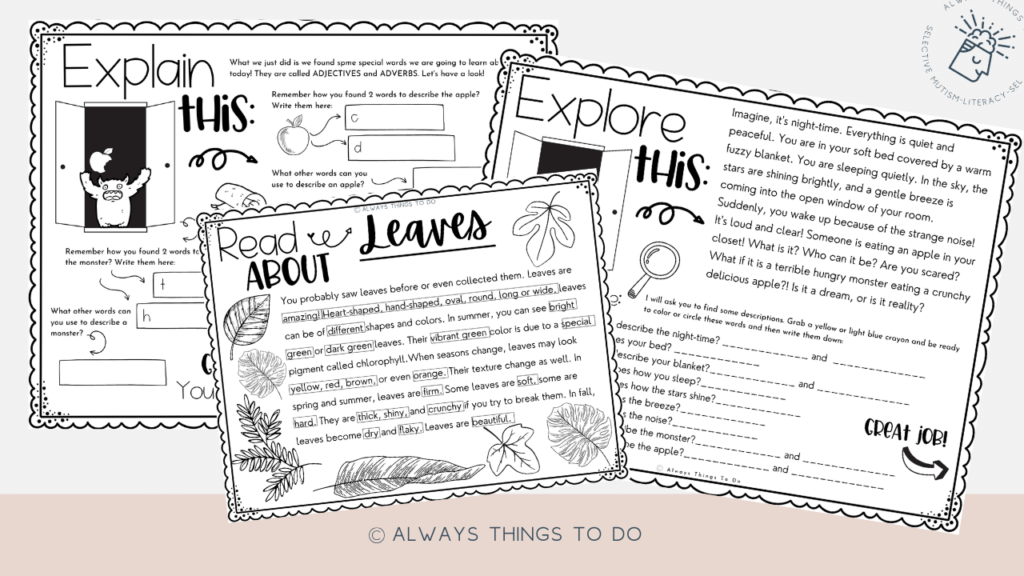
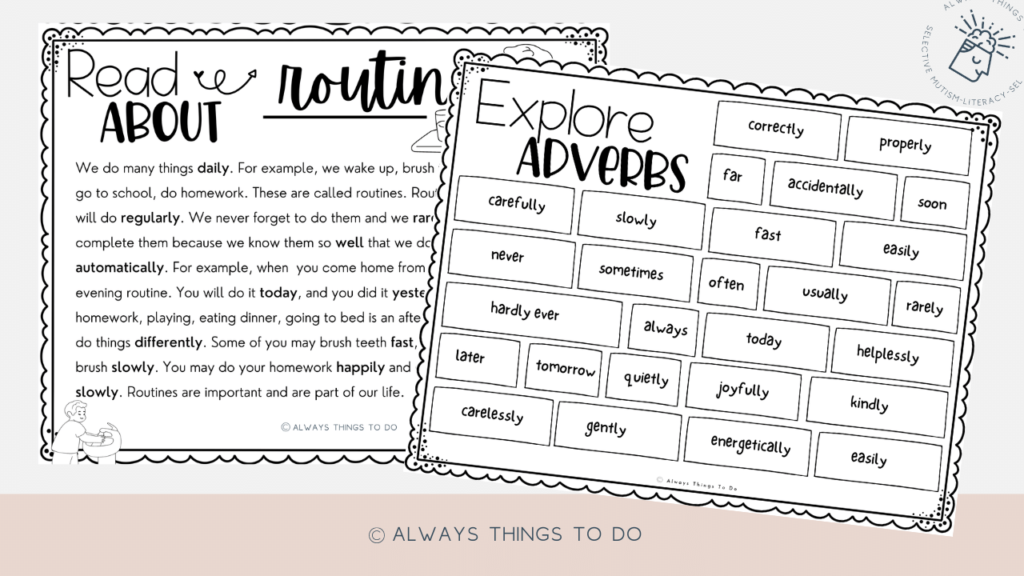
Include explicit rules in a kid-appropriate manner while presenting rules on adverbs vs adjectives.
- Present the rules on adverbs and adjectives explicitly but avoid “dry” grammar language that is not age-appropriate (For example, “an adjective is a word that describes a noun” – will make no sense and is not kid-friendly).
- Consider explaining to students why we need adverbs and adjectives and give as many examples as possible.
- Ask students to read a text packed with adverbs and adjectives and ask them to deduce how these two parts of speech are used.
- Give students opportunities to explore books and write down examples of adverbs and adjectives on sticky notes.
- Create a class jar for adverbs and adjectives.
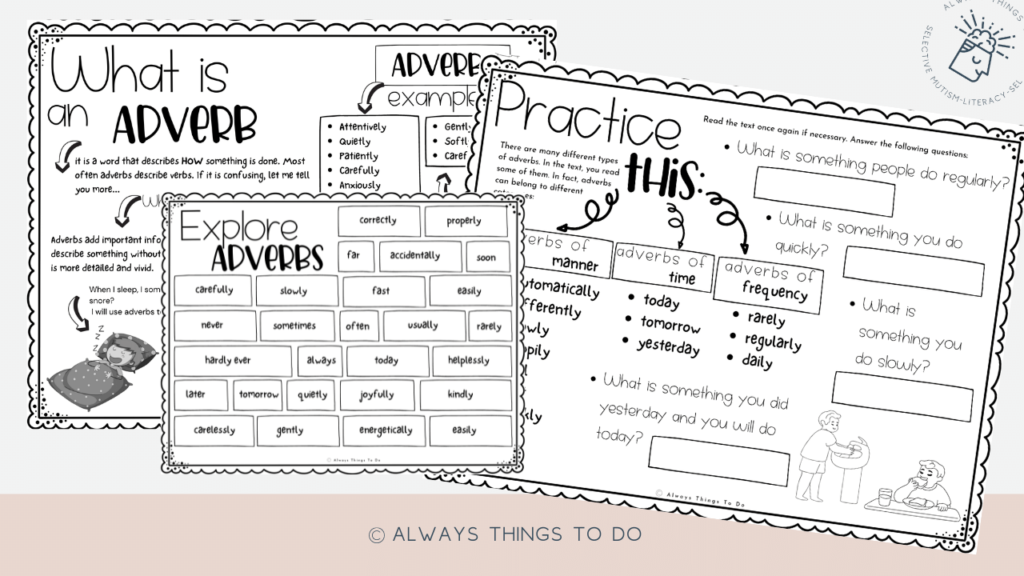
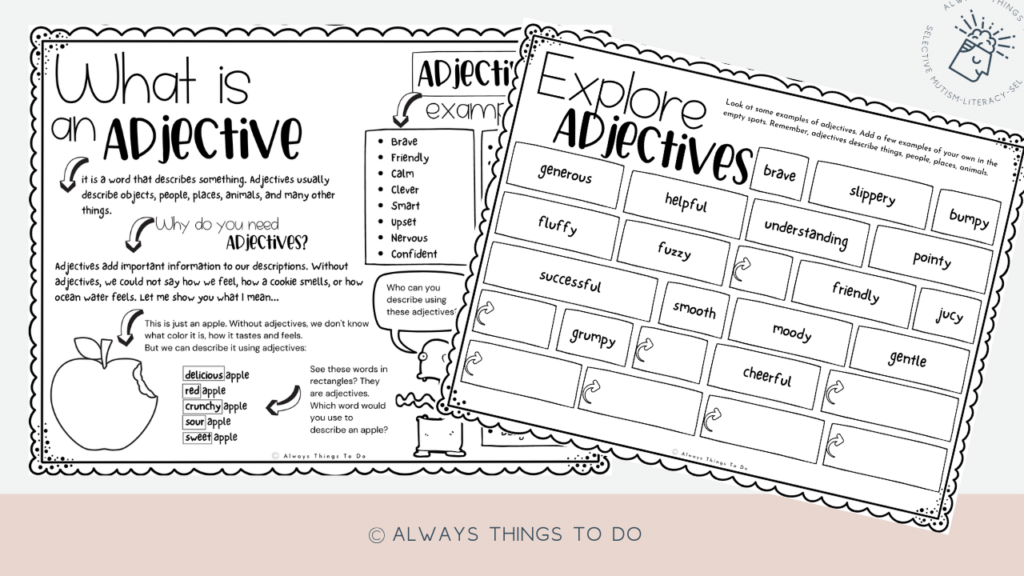
Create opportunities for negotiation of meaning while practicing adverbs vs adjectives.
- Give students text packed with examples of adverbs and adjectives. Ask them to notice words that describe. Let them discuss what role the worlds play in a text or how they can use the same words in their everyday life.
- Engage students in learning about and using adverbs and adjectives by offering them to draw adverbs and adjectives and discuss how these words can be used.
- Provide students with mentor sentences and paragraphs packed with examples of adverbs and adjectives. Modeling well-written samples will give students opportunities to notice regularities in the use of adverbs and adjectives in a sentence.
- Ask students to talk about objects and how they would describe them.
- Give students questions with examples of adverbs and adjectives embedded. Give them time to discuss questions.
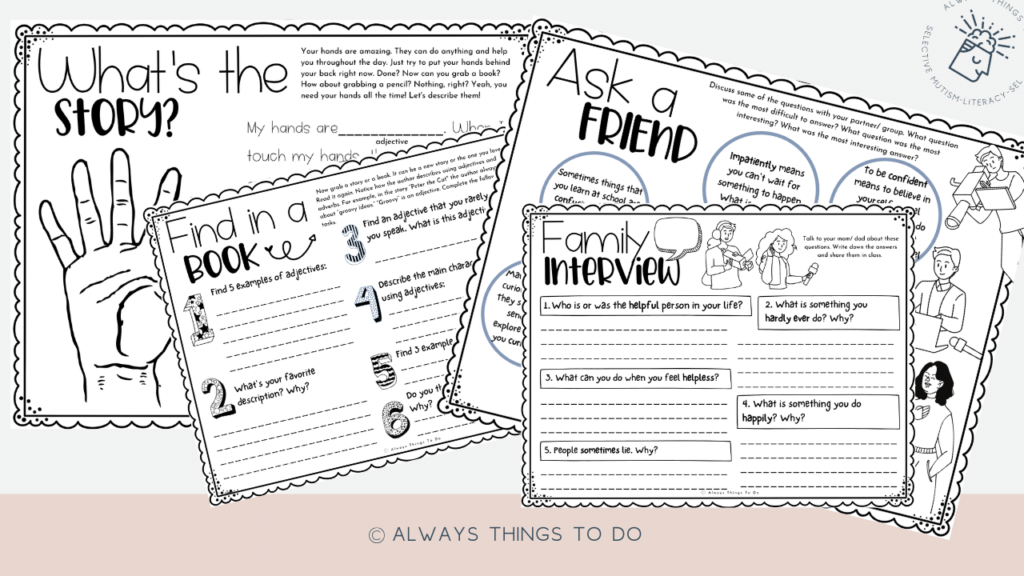
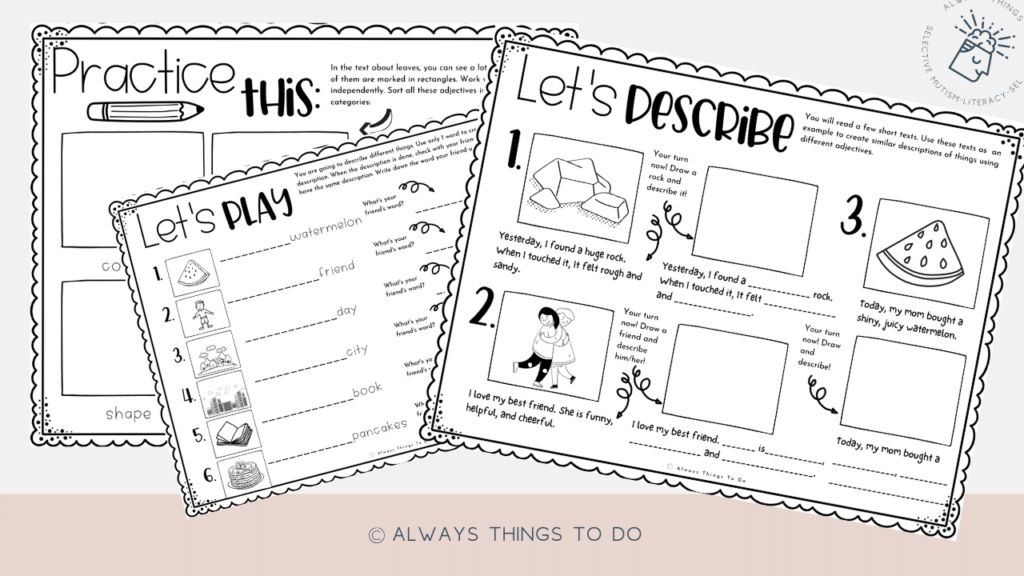
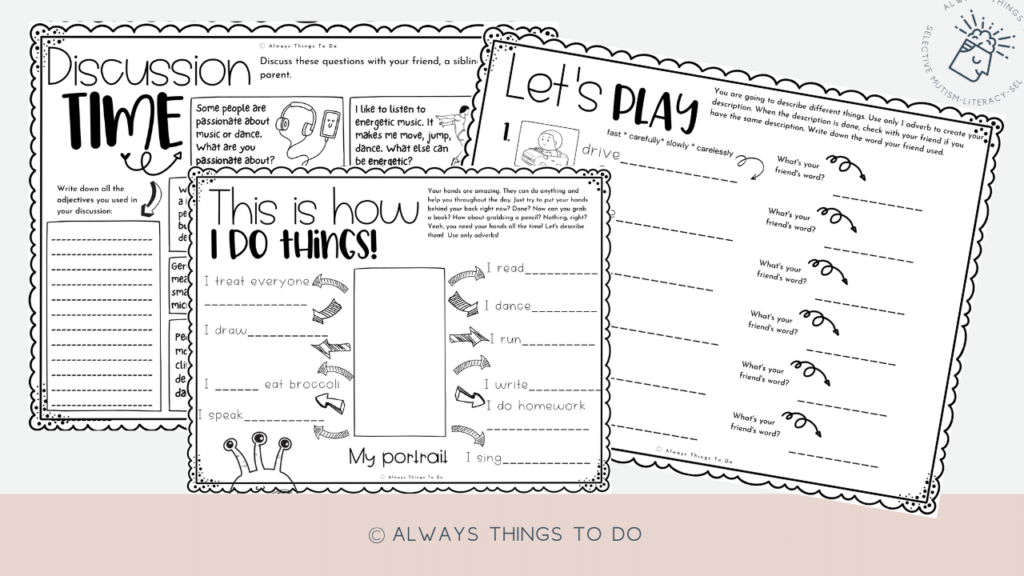
There are many ways to teach grammar. There is no one size fits all.
Depending on the age of students, different activities may be appropriate. But the three principles are true for presenting any grammar phenomenon:
Provide continuous input
Provided rules in child-appropriate way
Give opportunities for negotiation of meaning
If you are busy to get creative, check out these worksheets for adjectives and adverbs: “Adjective & Adverbs: An Easy Peasy Guide to Difficult Things.”
Interested in more grammar? Explore these resources:
Irregular Verbs Worksheets: Practice in Context.



